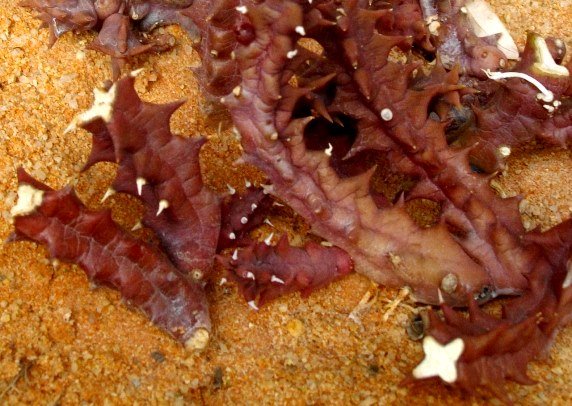Orbea gerstneri subsp. elongata

Author: Ivan Lätti
Photographer: Ivan Lätti
Orbea gerstneri subsp. elongata was previously known as Orbeopsis gerstneri subsp. elongata and before that as Caralluma gerstneri subsp. elongata. This dwarf stem succulent spreads into clumps through stolons, as well as by stems branching. The many branches reach heights around 5 cm.
The flowers grow solitary from stem bases or in groups of up to three, opening in succession. Flowers are tubular with five large, spreading corolla lobes, long and acutely pointed. The corolla colour is maroon with mottled surface and vibratile hairs on the corolla margins near the lobe bases. Many orbeas have these vibrating hairs, usually growing on the corolla margins. They are believed to add to the fetid Orbea flower smells in attracting flies that spot the movement of the hairs. Charms are flaunted in mysterious ways in this world; and pollination is often a team sport.
Successful flowers are followed by fruits, paired or single follicles full of seeds, each attached to a hairy coma. When a ripe follicle splits, wind grabs each fluffed-out coma for a flight to future-land where the seed lands when the wind is out of breath.
This allows the hairy coma to tangle on a twig, determining the seed’s resting place where it may hit the ground and germinate in the fullness of time. The plants flower from mid-spring to midsummer.
The distribution of the subspecies, endemic to Limpopo, ranges from Ohrigstad and Penge to the Blyde River Canyon. The habitat is grassland and open woodland where the plants are found among stones and grass on slopes, often in dolomitic soils at elevations from 900 m to 1600 m. Although this plant is rare, its population is deemed stable early in the twenty first century (Hardy and Fabian, 1992; www.plantzafrica.com; www.redlist.sanbi.org).

